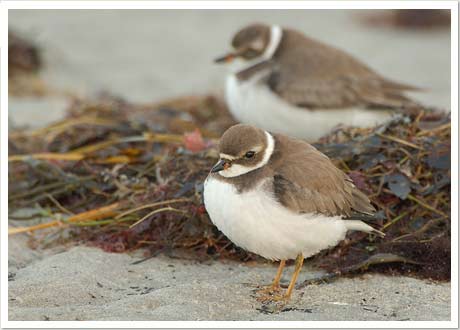|
| Semipalmated Plover |
PHOTO: 1 2 |
 |
|
 |
 |
| Semipalmated Plovers are common during migration in spring, summer and fall. They migrate to the arctic to breed and use stopovers like Plymouth Beach to put on caloric fuel for migration. Like all other plovers, Semipalmated Plovers feed by seeing invertebrate prey at the surface and then running to seize it. During peak migration period, hundreds can be found feeding anywhere on sand and mud flats or roosting on the sandy beach during high tide. |
|
|